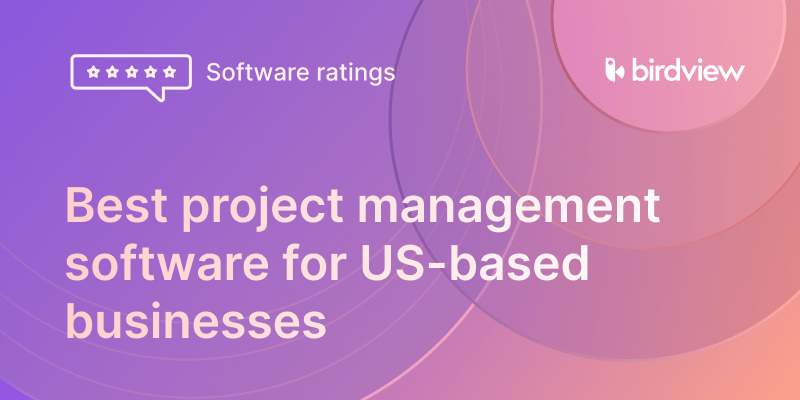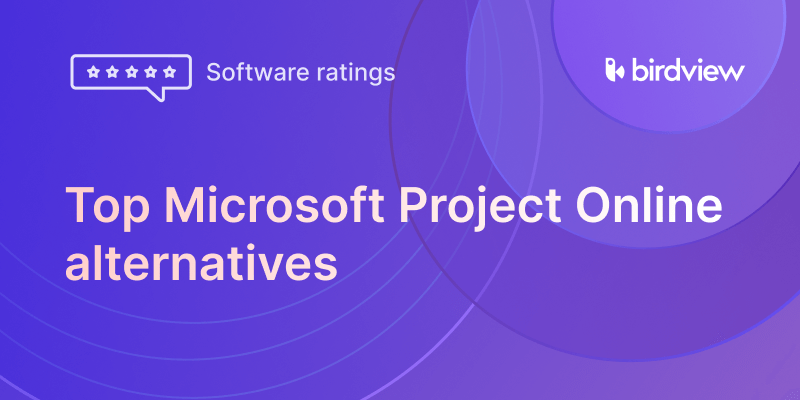September 5, 2025, brought news that many Canadian organizations had been quietly dreading. Microsoft announced that Project Online will officially retire on September 30, 2026, with new subscriptions ending for new customers on October 1, 2025.
For Canadian public sector institutions, enterprises, and professional services firms that have relied on Project Online for years, this isn’t just another software update. It’s a fundamental shift that demands attention. This transition represents both a challenge and an opportunity. Obviously, the retirement timeline creates pressure. But it also opens the door for Canadian teams to modernize their project management approach with solutions built for today’s business environment.
What’s happening with Microsoft Project Online
Microsoft is steering customers toward its newer ecosystem: Planner, Project for the Web, and the broader Power Platform. These tools represent Microsoft’s vision for modern project management, but they also represent a fundamental departure from what Project Online users have relied on for years.
After September 30, 2026, Project Online will no longer be accessible. Organizations still using the platform after that date will face service interruptions and data accessibility issues. New sales to fresh customers already stopped on October 1, 2025, though existing users can continue renewing until the final retirement date.
Why the MS Project Online retirement Impacts Canadian organizations differently
For Canadian teams, this timeline intersects uncomfortably with fiscal planning cycles. Many government agencies and public sector organizations operate on April-to-March fiscal years. Large enterprises often finalize their technology budgets months in advance. Waiting until late 2026 to address the migration means scrambling during budget lockdowns, missing procurement windows, and potentially facing higher costs as vendor availability tightens.
Canadian organizations also face considerations that their American or European counterparts don’t necessarily share, such as compliance, sovereignty, and operational challenges.
- Data residency and compliance sit at the top of the concerns list. While PIPEDA does not explicitly require data to be stored in Canada, it mandates that organizations must protect personal information, regardless of where it is stored. But here’s where it gets complicated for many organizations. If your organization resides in Québec or Alberta, you are restricted from transferring public sector personal data outside of the country. Nova Scotia and British Columbia have similar restrictions for government institutions and Crown agents.
- Government and public sector dependencies create particular urgency. The federal government’s Microsoft Enterprise Agreement, valued at $940 million over seven years, includes business applications like Project and Visio. Countless ministries, Crown corporations, municipalities, and agencies have built workflows around Project Online within their Microsoft 365 environments. The retirement forces these organizations to rethink not just project management, but entire integrated ecosystems.
- Bilingual operations represent another distinctly Canadian requirement. Federal agencies and national enterprises need platforms that seamlessly support English and French interfaces. It’s about ensuring French-speaking teams in Quebec can work as efficiently as English-speaking teams in Ontario, with proper terminology, date formats, and currency handling.
- Regional support and training might seem like a minor detail until you’re troubleshooting a critical issue at 4 PM Pacific time and your vendor’s support team clocked out hours ago in their European headquarters. Canadian organizations benefit from partners who understand Canadian business hours, can provide on-site training across the country, and grasp the nuances of provincial differences in how work gets done.
Practical migration playbook for Canadian teams
Teams in Canada should draft a structured migration plan well ahead of September 30, 2026. Waiting for more clarity or hoping for an extension won’t make this transition easier. Here’s what Canadian organizations should prioritize immediately:
1. Assess current usage across your organization
Not just “who uses Project Online,” but how it’s used, what data it contains, and which departments would face operational disruption without it. Pay particular attention to cross-provincial projects and any data sharing arrangements that might have compliance implications.
2. Audit your integrations thoroughly
Project Online rarely operates in isolation. Most Canadian organizations have connected it to Power BI for reporting, SharePoint for document management, and Microsoft Teams for collaboration. Understanding these connections prevents nasty surprises during migration. Make a comprehensive map of data flows and integration points.
3. Back up your data
Don’t assume Microsoft will maintain access to historical data beyond the retirement date. Export project schedules, resource allocations, financial data, and any custom fields you’ve created. Ensure backups include metadata and relationships, not just raw data. Store these backups in Canadian data centers to maintain compliance.
4. Evaluate replacement options with Canadian requirements front and center
Any platform you consider must meet provincial data regulations relevant to your operations. It should scale with your business, whether you’re a 20-person consulting firm in Halifax or a 2,000-employee ministry in Ottawa. Look for solutions that explicitly support Canadian compliance frameworks, offer verifiable data residency options, or are built and hosted in Canada. Choosing a Canadian-created solution like Birdview PSA can simplify compliance, ensure local data handling, and provide access to support teams that understand the unique needs of Canadian organizations.
5. Plan for change management early
Technology transitions fail more often from people issues than technical problems. Identify champions within departments who can advocate for the new platform. Communicate the “why” behind the change before announcing the “what.” Give teams time to adjust their workflows and muscle memory.
6. Plan your replacement options early
Don‘t wait until Project Online is nearing retirement. Start exploring your options today. Begin by identifying the platform that best fits your organization‘s needs and IT strategy. For teams staying within the Microsoft ecosystem, Planner (and Planner Premium) may cover basic task and work management needs. If you‘re considering third-party solutions, evaluate tools designed for professional services and complex project environments. Platforms like Birdview PSA, built in Canada, offer an all-in-one approach that combines project, resource, and financial management while meeting local compliance and data-residency standards.
The organizations that wait until mid-2026 will compete for limited implementation resources. Vendors familiar with Canadian compliance requirements, PIPEDA obligations, and provincial variations can accelerate your timeline significantly. Look for partners who can support you during Canadian business hours and understand the unique challenges of operating across ten provinces and three territories.
What to look for in a replacement (from a Canadian perspective)
Not all project management platforms are created equal, particularly when viewed through the lens of Canadian operational requirements. Here’s what matters most:
- Data protection and residency: Even though PIPEDA doesn‘t mandate data storage in Canada, certain provinces and industries do. Choose a platform with Canadian data center options, transparent data residency documentation, and clear compliance with PIPEDA and provincial privacy acts.
- Scalability that fits Canadian organizations: A tool that suits a Toronto startup might not support a federal department‘s workload, and vice versa. Look for solutions that scale with your actual needs and budget, whether you manage 10 projects or 1,000.
- True bilingual localization: Real bilingual support means more than translated labels. The interface, documentation, and terminology should feel natural to both English and French speakers, with proper date, time, and currency formats. For national teams, this is essential for adoption.
- Integration with Canadian business tools: Your platform should connect easily with the systems Canadian companies actually use, such as QuickBooks, Sage, Salesforce, and Microsoft 365, via native integrations or reliable APIs.
- Local support and training: Choose vendors offering support during Canadian business hours and across time zones. On-site or live training options can make a huge difference for distributed teams. Bonus points for vendors who understand how Canadian organizations operate in practice.
- Migration expertise: Moving off Project Online requires experience. Look for vendors who understand its structure, can preserve your project relationships and data integrity, and make the transition smooth and secure.
Birdview PSA – a Canadian MS Project Online alternative
When evaluating Project Online alternatives, Canadian organizations have a homegrown option worth serious consideration, such as Birdview PSA.
Developed in Canada and trusted by organizations across North America, Birdview PSA goes beyond simple project tracking to deliver comprehensive professional services automation. It combines project management, resource planning, and financial oversight in one platform.
“Birdview PSA has been a game changer for our organization. What I love the most is its ability to promote collaboration across all departments, allowing us to showcase one of our core values: collaboration. It‘s truly satisfying to see teams from different locations and roles working together seamlessly on the same project, enhancing our operational excellence.” – Chelsea Mihaylo Hum, Director of Administration and Project Management at Arizona Liver Health
For Canadian teams preparing for Project Online‘s retirement, Birdview offers several key advantages:
- Canadian data residency – Keep your project data within Canadian borders and compliant with provincial privacy laws.
- True bilingual interface – Fully functional in both English and French, ensuring seamless collaboration across teams nationwide.
- Local support – Access responsive assistance during Canadian business hours from teams who understand local compliance and operations.
- Smooth migration from Project Online – Benefit from experienced migration specialists who preserve project data, structure, and user familiarity.
- Extensive integrations – Connect easily with Microsoft 365 tools, QuickBooks, and other Canadian accounting and CRM systems.
- Comprehensive PSA capabilities – Go beyond project management with built-in resource planning, financial tracking, and portfolio dashboards.
The retirement of Microsoft Project Online marks a significant shift for Canadian project management. As you evaluate options, prioritize solutions that meet your data sovereignty requirements, scale with your business, and come with partners who understand Canadian compliance landscapes.
Don’t wait until the deadline forces your hand. Start your 14-day free trial of Birdview PSA and experience what project management built for Canadian needs actually feels like.
Frequently Asked Questions
1. When exactly will Microsoft Project Online retire in Canada?
Microsoft Project Online will retire globally, including Canada, on September 30, 2026. This retirement date applies simultaneously across all regions. New subscriptions are no longer available to new customers as of October 1, 2025, though existing customers can continue renewing their subscriptions until the final retirement date.
2. Will my data remain accessible after 2026?
Microsoft has not guaranteed continued data access beyond the September 30, 2026, retirement date. Organizations should not assume they’ll be able to retrieve historical data after this deadline. Export and secure all project data, resource information, financial records, and custom configurations well before the retirement date. Store these backups in compliance with your organization’s data residency requirements.
3. Can I migrate directly from Project Online to Birdview PSA?
Yes. Birdview provides dedicated migration support for organizations transitioning from Project Online. This includes data mapping to ensure project information, resource allocations, and historical data transfer correctly, as well as configuration assistance to replicate or improve workflows you’ve built in Project Online. The migration process preserves project relationships and dependencies while giving you the opportunity to streamline processes during the transition.
4. Does Birdview store data in Canada?
Yes. Birdview offers Canadian data center options for organizations with data residency requirements. This ensures your project information remains subject to Canadian legal protections and complies with provincial regulations in Quebec, Alberta, Nova Scotia, and British Columbia that restrict certain data from leaving the country. Birdview can provide detailed documentation about data storage locations and processing to support your compliance obligations under PIPEDA and provincial privacy acts.



